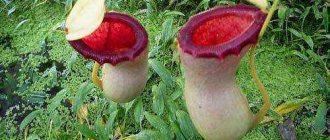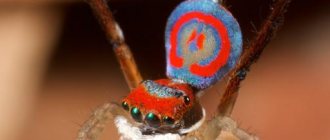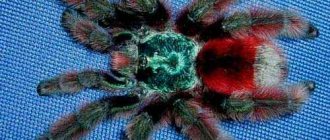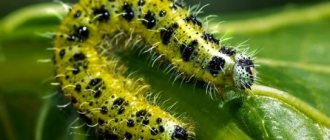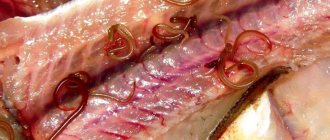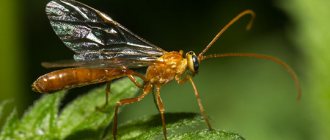The mushroom kingdom is a unique world with vast boundaries that extend far beyond the forest. Thus, among the representatives of fungi there are species that require another form of life, and the dominant ones in such relationships are parasitic fungi. A prerequisite for the development of such fungi is the presence of a host: parasite spores settle in it and feed on it, slowly destroying and killing it. It is noteworthy that the host can be not only tree species, but also plant forms, and even living organisms. What types of parasitic fungi are there, and who do they prefer to have as their host? Let’s talk a little about this today.
General concepts
A parasitic fungus is completely dependent on its host, which ensures its existence. But at the same time, it gradually exhausts the host, so such organisms are considered a weakened form of predation. Plants and other organisms affected by parasitic fungi can live with them for many years. Their lifespan depends on the type of “settlers” and the characteristics of the owner. Thus, hardwood trees can live with such parasites for decades, while, for example, a poplar can die in a few years.
The distribution zone of these organisms is not limited to vegetation. There are fungi that are parasitic to humans and can cause very serious illnesses. They require timely treatment as they can lead to serious consequences. There are also plant parasitic fungi that attack various types of crops.
Pests in the human body
Fungi attack not only plants and animals; there are also examples of parasitic fungi that prefer the human body as housing and food. They most often settle on the skin or mucous membranes and can cause many dangerous dermatological diseases, such as:
- otitis;
- allergic reactions of varying severity;
- candidiasis;
- ringworm;
- psoriasis, etc.
Lower parasitic fungal microorganisms, such as mold, provoke serious diseases such as bronchitis and pneumonia. Do not underestimate the harm caused by any type of parasitic fungi, since in humans diseases spread quickly and are quite difficult and time-consuming to treat.
Fungal infections of plants cause irreparable damage to agriculture and forestry, so it is recommended to constantly carry out preventive measures in gardens, fields and forest areas, and if diseases are detected, you should begin to fight them as quickly as possible.
Types of parasitic fungi
Parasitic fungi are divided into two types.
- Obligate fungi (smut, rust, powdery mushrooms), distinguished by their narrow specialization. They have a limited range of potential hosts. They consume only a specific set of essential nutrients. The lifespan of these parasites directly depends on the life activity of the host. That is why their relationships (development cycles) are coordinated. Moreover, by the time the host dies, the parasite has time to form overwintering spores. These fungi penetrate the plant using hyphae (thread-like formations) that resemble a spider's web. They infect the host through wounds, stomata, cuticle, and epidermis. The hyphae branch and move deeper into the plant along the intercellular spaces. During their life activity, such mushrooms secrete enzymes - pectinases. With their help, they destroy the intercellular substance of the host, clearing the way for organs in the plant tissue. With the help of special suckers - haustoria - they penetrate cells and absorb nutrients from them. Their peculiarity is that the plasma membranes do not die or collapse.
- Facultative parasitic fungi that are saprotrophs. They adopt this lifestyle only from time to time. They are the ones who most often lead to the death of their owner. Saprophytic fungi are both parasites and scavengers that feed on the remains of the organisms they have destroyed. They do not form haustoria. The host plant tissue is destroyed by fungal pectinases. They cause soft tissue rot. Their cellulase then dissolves the plant cell wall and absorbs its contents. Unfortunately, facultative parasitic fungi, examples of which can be given for a very long time, are not distinguished by their narrow specialization. For example, late blight affects almost all representatives of nightshades (potatoes, tomatoes, peppers).
Treatment
- If you feel unwell, call an ambulance. After you are taken to the hospital, the doctor will carefully examine you and ask you questions.
- If the doctor suspects that you have a fungus, he will refer you to undergo the appropriate tests: urine, blood (biochemical and bacteriological analysis).
- After confirming the presence of fungal formations in the body, you will begin to be treated.
- If the situation is difficult, they will leave you in the hospital, but no, they will send you home (to be treated at home).
- Fungi need to be removed with special antifungal agents and antibiotics.
- And also, simultaneously with the destruction of fungi, you need to do something about raising your immunity.
- If fungi are found on the body, then you also need to use special antifungal ointments. They must also be prescribed by a doctor.
- Immunity is an important opponent of fungus, as well as other diseases. It is important that it is always strong.
- To remove the fungus, you must not create favorable conditions for its development and life.
- The fungus needs to be treated intensively for two to three weeks.
- After treatment, you need to take blood and urine tests again. If the fungus is not detected, then your body has gotten rid of it. But still, you need to constantly be on guard and keep your immunity under control.
Variety of parasitic fungi
Fungi that are parasites of plants and other living organisms form an ecological group of almost 2000 species. Most of them belong to deuteromycetes and ascomycetes. Since these parasites interact differently with the body of their host, the relationship between them is divided into two groups of diseases.
- Mycoses that develop under the influence of direct parasitism of pathogenic microorganisms. They are divided into 2 groups. These include dermatomycoses that develop on the surface of the integument of a living organism, and deep (systemic) mycoses that affect internal organs.
- Mycotoxicoses, which are poisonings caused by the influence of toxins formed by pathogenic microorganisms. They can be caused by eating foods that have toxic fungi on them.
Superficial mycoses
Trichophytosis (ringworm) is more susceptible to cattle, especially calves, as well as sheep and horses. Inflammatory lesions with a flaky surface appear on the skin; hair becomes dull, brittle, breaks off, and bald areas form.
Microsporia often affects cats, dogs, fur-bearing animals, as well as horses and mouse-like rodents. Foci of baldness form on the skin of the muzzle, on the neck, at the base of the tail; mustaches and eyebrows are often affected; hair breaks off.
Favus (scab) is recorded more often among birds: chickens, turkeys, ducks. Scutules are formed on the ridge and earrings. A white cover appears at the base of the feathers, under which the skin atrophies, the sebaceous and sweat glands are destroyed, and the feathers fall out.
Most often, trichophytosis is caused by T. faviforme, T. equinum, T. mentographites, microsporia - M. canis and M. gypseum; favus - Achorion gallinae.
Candidiasis often affects young farm animals and poultry due to improper feeding, vitamin deficiencies, dysbacteriosis and unsystematic long-term treatment with antibiotics, especially broad-spectrum antibiotics.
Dense milky-white deposits appear on the mucous membrane of the mouth, tongue, and genitals, closely adherent to the underlying tissue. If you try to remove this film with tweezers, bleeding may occur. Further development of the process leads to damage to the intestines, lungs, kidneys and other internal organs and death of animals.
The causative agents are yeast-like candida fungi: large round or ovoid cells that reproduce by budding. The most common pathogen is Candida albicans, although other species can also cause the disease (C. krusei, C. tropicalis, etc.).
Micro- and macroparasites
Parasitic fungi are divided into 2 main categories.
- Microparasites that reproduce inside the body of their host or in its cells. They belong to the class of chytridiomycetes. Found in algae, other fungi, invertebrate animals, and on the roots of land plants.
- Macroparasites that grow in the body of their host, but reproduce using special forms. Over time, they leave the host's body. This category includes representatives such as ascomycetes (for example, ergot), deuteromycetes, oomycetes (phytophthora), basidiomycetes (tinder fungus).
Forest parasitic microorganisms
Forest pests are common mushrooms that grow in forests, many of them are eaten by humans and animals. Trees are affected by parasitic organisms such as:
- Tinder fungus. It prefers to live in deciduous forests, but sometimes it can also be found on garden trees - pear or apple trees. It affects the bark of the host, eventually growing inside the trunk, causing the tree to rot from the inside and become rotten and hollow.
- Grifola curly. Just like the tinder fungus, it prefers deciduous forests. This edible mushroom is quite widespread in Russia. The life of a tree affected by griffola is reduced by at least 15 years. The species is listed in the Red Book of Russia, since in addition to harm, it also brings many benefits. Grifola is used to treat tuberculosis and stabilize blood cholesterol levels; it is also useful for vitamin deficiency.
- Autumn honey fungus is a dangerous parasitic fungus that, once settled on a tree, causes white rot. This species can infect about 200 different types of trees. The mycelium of the parasite looks like dense dark cords, which, growing, penetrate inside the tree and affect its cambial layer. The mycelium also releases poisonous toxins that gradually poison the tree. Infected young trees die after 3 years, old ones can survive up to 10 years.
- Winter honey fungus (Vlammulina velvetypodia) is a winter edible mushroom. It usually settles on stumps, but can also infect a living deciduous tree, leading to its death.
Infection with parasitic fungi causes enormous damage to forestry, because it leads to massive death of trees, because spores are carried by wind and insects over long distances, affecting vast areas of forests.
Smut mushrooms
A special place is occupied by parasitic smut fungi, the names of which are familiar only to specialists. These pathogenic microorganisms settle on higher plants. A parasitic fungus such as basidia tetracellata grows from a teliospore called smut, or chlamydospore. It has diokaryotic and intercellular mycelium. These parasitic fungi penetrate through the host's shoots. During sporulation, their mycelium breaks up into smut spores, which are dark in color. Plants affected by this parasite appear charred.
The spores of these parasites germinate in the spring. However, they can affect different parts of the plant. Over time, they divide reductionally, as a result of which promycelium is formed - basidia with spores. They have different gender characteristics. Smut fungi cause hypertrophy of plant tissues. They parasitize grain and cereal crops such as wheat, barley, oats, corn, and millet. Smut spores fall into the ground and onto grain during harvesting, and after spring sowing they actively develop on the young plant. They slow down the growth and reduce the yield of cereals by feeding on their juices. To prevent the appearance of these parasitic fungi, before sowing, planting material is treated with special preparations. In the wild, smut is also found on other plants of the cereal family.
Ergot
These parasitic fungi, the names of which are familiar to every farmer, parasitize rye and various wild cereals. Ergot is also called queen horns because of the characteristic curved, hard structures that develop on the flowers of the rye ear. These growths are sclerotia of the parasite, which are oblong or triangular plexuses of the mycelium. They are black and purple in color. In some cases, they become covered with an easily erasable whitish coating. Their size is up to 3 cm in length and up to 6 mm in width. Ergot sclerotia developing on different types of cereal plants may have a different shape and size. The ovary of a flower infected with spores is destroyed over time. Instead of grains, resting stages of the fungus are formed in the ear - sclerotia, which easily overwinter until spring.
Rust or onion mushrooms
These parasitic fungi are microorganisms that develop on above-ground plant organs. Most of them die when the plants die, but in nature there are also perennial species of these mycoses. So, some of them easily survive winter in their roots. Rust fungi have strands of mycelium that are located between host cells. They are found almost everywhere and can infect fern and flowering plants. These parasites have 5 stages of development, and they can coexist simultaneously on the same plant.
Mold mycoses
There are many similarities in the clinical manifestations of this group of mycotic diseases, as well as in the pathogenesis, so they should be considered together.
Aspergillosis mainly affects poultry due to aerogenic infection as a result of unsanitary living conditions, the use of moldy feed, bedding, etc. The airways are affected, a cough appears, and serous fluid is released from the beak and nose. At autopsy, many grayish-yellow nodules are found in the lung tissue and other organs.
In addition to birds, large and small livestock suffer from aspergillosis, usually weakened as a result of prolonged concomitant infection and immunodeficiency.
Penicillosis also affects weakened animals with pulmonary pathology, but sometimes skin manifestations can also be recorded.
with mucormycosis aerogenously, as well as as a result of traumatic damage to the skin and mucous membranes.
The most common etiological agents for aspergillosis are A. fumigatus, A. flavus, A. niger, for penicillosis - P. glaucum, for mucormycosis - M. corymbifera, M. racemosus.
Fungi parasites of agricultural crops
In addition to ergot, rust and smut, which attack cereal crops, there are a huge number of fungi in nature that parasitize other agricultural plants. These include such dangerous diseases as late blight, fusarium, olpidium (“black leg”), powdery mildew, synchytrium (“potato cancer”), rot, botrytis, scab and many others. At the same time, they infect various types of crops, causing enormous damage to the national economy. Such parasitic fungi can develop on various parts of plants. Moreover, they affect not only annual vegetables, but also perennial shrubs and trees. Various fungicides are used to prevent and control fungal diseases. In some cases, treatment does not bring the expected result. In this case, plants affected by parasitic fungi are uprooted and burned. Sometimes it may be necessary to disinfect the soil with a furatsilin solution or heat treatment, since spores of some parasitic fungi can persist in the soil for a very long time.
Polypores
Parasitic fungi on trees are very common. They can be of different sizes and colors. One of the most famous parasitic fungi among them is the tinder fungus. Such organisms belong to a non-systematic group of the basidiomycetes department. These are parasites that most often develop on wood. Sometimes they settle on the soil. Their distinctive feature is the tubular hymenophore. Polypore fungi have the following fruiting bodies: prostrate, cap-footed (sessile). The consistency of their pulp can be fleshy or hard (corky, woody, leathery). Previously, this group of parasitic fungi was considered as systematic, belonging to the family Polyporaceae, but after the 50s of the 20th century this interpretation was considered artificial. Today, experts consider the concept of “tinder fungi” to refer to the morphology of the parasite.
They destroy wood, thereby causing enormous damage to green spaces. Polypore spores penetrate the plant through wounds on the bark, frost holes, sunburn, and damage to branches. They develop quite quickly, and the mycelium penetrates all tissues of the tree. From the moment of infection by spores to the formation of an adult fruiting body, depending on its type, only a few years pass. Over time, the host plants of the fungus turn into dust. They are not suitable for further processing. The wood becomes brittle and affected trees often break from strong winds.
Polypores have the shape of a hoof (semicircle). They are often arranged in the form of “shelves” one above the other. Most of these parasites form perennial fruiting bodies. Numerous spores are formed in the small tubes that are located on their lower plane. If a parasitic fungus, tinder fungus, appears on a valuable tree, it must be cut off with a sharp knife or knocked down with a stick (if it is high) and burned. An infected tree lives much shorter than a healthy one. Some parasites, such as birch chaga, are used in folk medicine.
Deep mycoses
Actinomycosis is apparently the most common deep mycosis of farm animals in the Russian Federation. The main types of farm animals are affected: cattle, pigs, horses. Actinomycosis proceeds for a long time, starting with foci of compaction in the head, lower jaw, neck, which then soften, forming fistulas with purulent discharge. In the pus you can find small yellowish grains the size of millet grains - drusen.
This disease is characterized by damage to the bones (in cattle), and in pigs - to the tonsils and mammary glands. The lungs are often involved in the process.
Actinomycetes, according to modern views, are closer to bacteria than to fungi, so sometimes diseases caused by actinomycetes are called pseudomycosis. The causative agent of the disease in animals is Actinomyces bovis, and in humans - A. Israeli.
Nocardiosis is a disease of large and small ruminants, in which the lymph nodes and vessels, as well as the lungs, central nervous system and udder are primarily involved in the purulent process. Lymph nodes of various locations soften, and pus is released from them. Very severe forms of nocardiosis are pulmonary (difficult to distinguish from tuberculosis) and meningeal. The most common cause of nocardiosis is Nocardia asteroids, an aerobic proactinomycete.
Actinobacillosis (pseudoactinomycosis) is a chronic disease characterized by damage to the soft tissues of the head and neck. Unlike actinomycosis, bones are not involved in the process. Large and small cattle and pigs are affected.
With actinobacillosis, abscesses form in the head area, affecting the tongue, subcutaneous tissue, and mammary gland. Systemic inflammation of the lymph nodes is characteristic. True drusen are not found in pus, although flakes are sometimes present. The causative agent is B. ligniersi.
